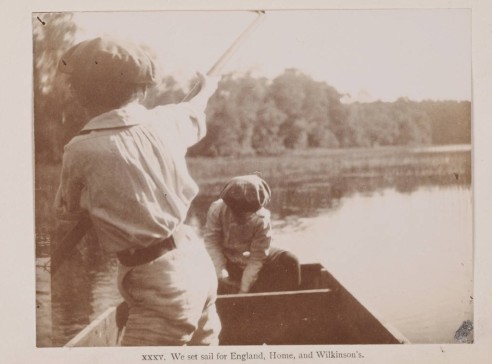by Carla Dominguez
During my monthly bookshelf dusting, I found a book that I didn’t remember buying. It was a biography of J.M. Barrie, something I probably picked up years ago and promised to read later. I pulled it out to read the back cover thinking, “Who is this?” and was surprised to be reminded that Barrie is the creator of Peter Pan or The Boy Who Couldn’t Grow Up.
I remember being effectively freaked out by the original Peter Pan story as a child, and being much happier watching animated and live-action family friendly adaptations. I had fallen for the idea that the story is about a childhood love between Peter and Wendy, but it’s very much not that. J.M. Barrie wrote Peter Pan to be a story about youth and death, and the inability to mature. Neverland is Peter’s imaginary playground where he has become omnipotent because he has been there for so long. Although he claims to be an ordinary child that ran away because he didn’t want to grow up, the character of Peter Pan is much more intense than that. He is neither human nor animal, “half a bird,” to be exact, stuck in a strange version of infancy. His emotions and imagination control his surroundings, for example: his arrival in Neverland brings a premature spring; he pretends to eat and his stomach fills, and he makes believe he’s a doctor and heals Wendy. He’s also a bit of an immature asshole, like most children are. He isn’t able to tell right from wrong or remember well, and everything is a happy game to him. His youth is accentuated by his rivalry with Captain Hook, the old withering pirate whose biggest fear is of growing old and dying, hence the ticking clock in the crocodile that follows him around.
Some theories suggest that Peter’s inability to age might be because he’s dead. J.M. Barrie’s older brother died when Barrie was young, and he dressed up in his brother’s clothes to please his distant mother, craving her attention the way Peter craved a mother. She would say things about her late son along the lines of, “At least my baby will never grow up.” That Peter can’t return home is another reason some think he is actually dead. When he attempts to go back home, the window is barred and he sees that his family has replaced him with another baby. Also interesting is that the Lost Boys are confirmed to be children that fell out of their prams, or were otherwise lost, and after seven days were herded to Neverland (or the afterlife) by Peter.
J.M. Barrie was close to the famous Llewelyn-Davies boys. It was a very observant relationship: he watched their games, and even featured them in a photo book he created about their imaginary adventures. Peter’s games were based off of theirs. The boys’ connection with Peter Pan followed them the rest of their lives. And just to make things ironic, the boy that Peter Pan was named after, Peter Llewelyn-Davies, committed suicide by jumping in front of a train.


With such a depressing outlook on youth and life in general, many think that Peter Pan was written as a cautionary tale to children, to tell them that growing up is a good thing, and that you shouldn’t stay a young little shit forever. But this probably wasn’t what Barrie was intending. Peter did, after all, let Wendy go back home once he saw how much love Mrs. Darling had for her. Barrie definitely adored Peter, and was proud of his bravery and fierce love of imagination. When Peter is captured and tied to a rock, watching his life slip away as the tide comes in, he contemplates his mortality and says, “To die will be an awfully big adventure.” Children posses such innocence but lose it slowly as they become adults, and J.M. Barrie implores us to keep some of that naivety and perhaps never completely grow up.
source / x
These are the original illustrations for Peter Pan, done by F.D. Bedford











